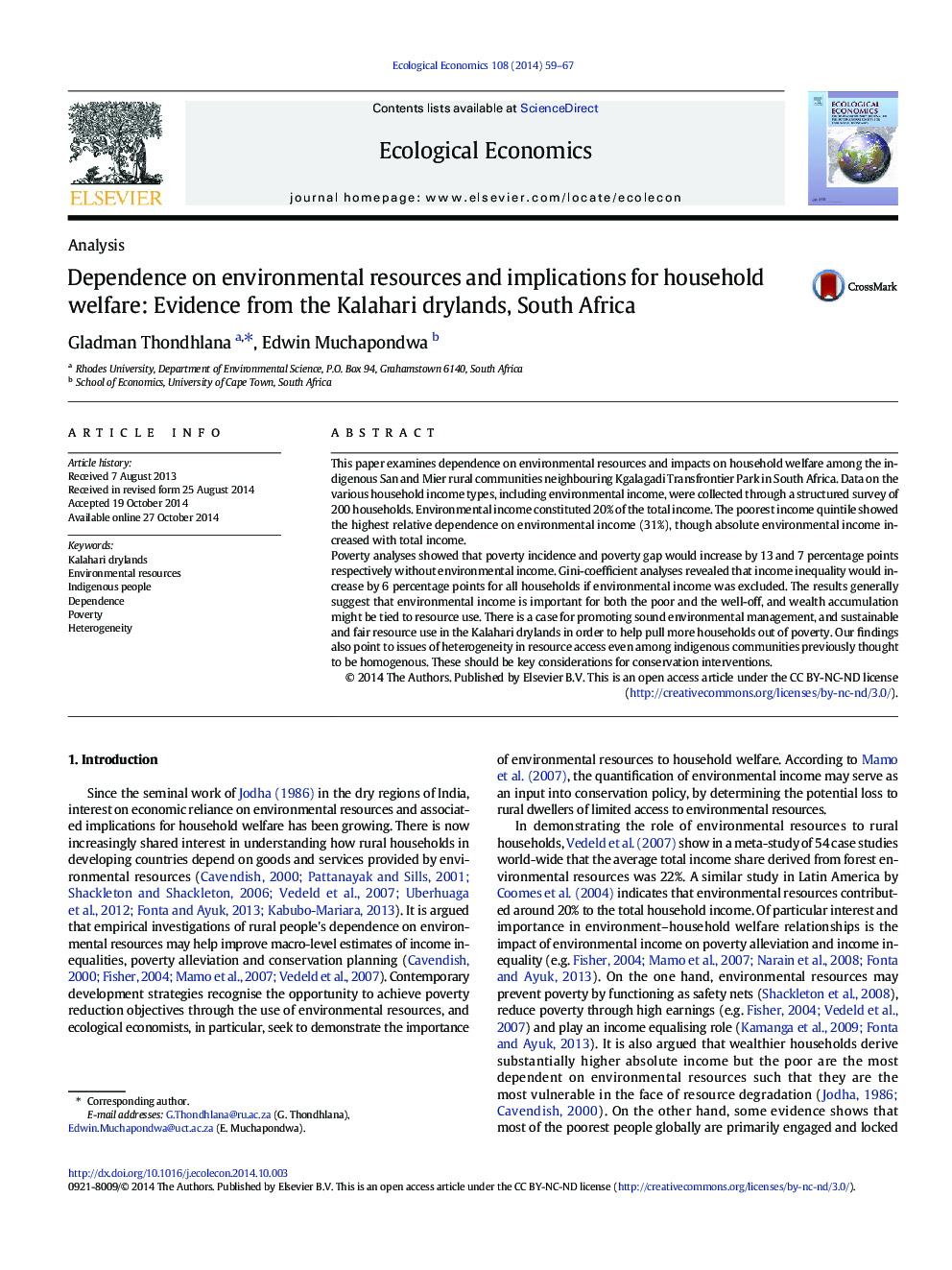| کد مقاله | کد نشریه | سال انتشار | مقاله انگلیسی | نسخه تمام متن |
|---|---|---|---|---|
| 5049574 | 1476371 | 2014 | 9 صفحه PDF | دانلود رایگان |

- The impact of environmental resource use on household welfare was investigated.
- Across all households environmental resources provide up to 20% of household income streams.
- Environmental resources are disproportionately used by the poor households.
- Poverty incidence and poverty gap would increase without environmental income.
- Income inequality would increase if environmental income was excluded.
This paper examines dependence on environmental resources and impacts on household welfare among the indigenous San and Mier rural communities neighbouring Kgalagadi Transfrontier Park in South Africa. Data on the various household income types, including environmental income, were collected through a structured survey of 200 households. Environmental income constituted 20% of the total income. The poorest income quintile showed the highest relative dependence on environmental income (31%), though absolute environmental income increased with total income.Poverty analyses showed that poverty incidence and poverty gap would increase by 13 and 7 percentage points respectively without environmental income. Gini-coefficient analyses revealed that income inequality would increase by 6 percentage points for all households if environmental income was excluded. The results generally suggest that environmental income is important for both the poor and the well-off, and wealth accumulation might be tied to resource use. There is a case for promoting sound environmental management, and sustainable and fair resource use in the Kalahari drylands in order to help pull more households out of poverty. Our findings also point to issues of heterogeneity in resource access even among indigenous communities previously thought to be homogenous. These should be key considerations for conservation interventions.
Journal: Ecological Economics - Volume 108, December 2014, Pages 59-67